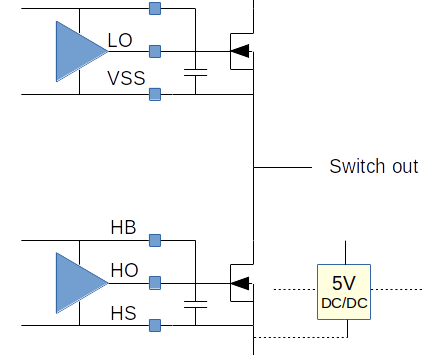Hi- We're designing a driver for a 0 to -200V application. Having a bit of trouble envisioning exactly what topology and power supplies are needed. See sketch attached. For the "high side" switch, it seems clear. HS is the negative HV supply, we can use a small floating DC/DC to provide 5V for HB and all is well using an N-MOSFET.
For the "low side" switch the topology is not obvious. As drawing with an N-MOSFET there is no local ground to connect the driver to. One could use a P-MOSFET but then LO would need to drive to -5V.
Any suggestions, or a pointer to an example application circuit for 0 to -200V drive?
Thanks,
Eric Hazen



